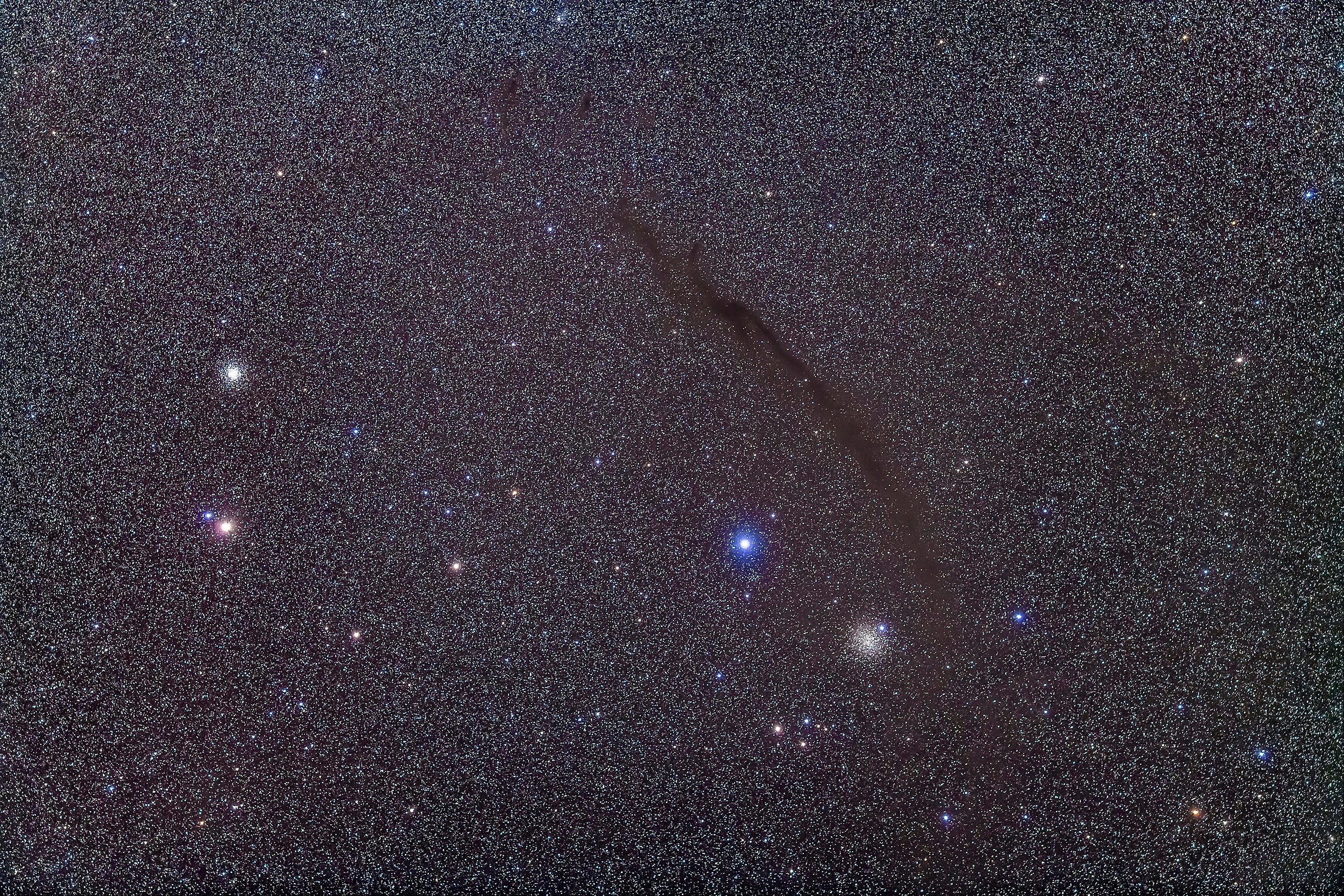
The Dark Doodad Nebula, unlike the Horsehead or Saturn nebulae, has one of those names that has stuck but isn’t particularly descriptive. (The general definition for doodad is a small object whose name you can’t remember or do not know.) Technically, it’s the 149th object in Aage Sanqvist’s 1977 article “More southern dark dust clouds.” Dennis DiCicco is credited with naming it while in Australia observing Halley’s Comet in 1986. I’d simply call it the Comet Shadow Nebula, as photos show a darker “comet head” that grows paler toward the “tail.”
Just what is the Dark Doodad? It’s a comet-shaped molecular cloud in the deep southern constellation Musca the Fly. Its narrow, dense mass blots out background stars in an otherwise rich part of the Milky Way. Stretching 3° (the width of six Full Moons) across the sky, it’s an ideal binocular object. Like many dark nebulae, this one is relatively close by, only 700 light-years away. That translates to a dust cloud over 30 light-years across. That’s equivalent to the distance between Sol and Delta (δ) Eridani (Rana).
This nebula is easy to find, located less than a degree northwest of Gamma (γ) Muscae. The transparency of this region of the Milky Way is evident in the brightness of the globular cluster NGC 4372 positioned a few minutes of arc from the “tail’s” terminus. The magnitude 7.2 cluster is located some 19,000 light-years behind the Dark Doodad. This is yet another case of two different deep-sky objects located in the same area of the sky, projected onto one field of view.









